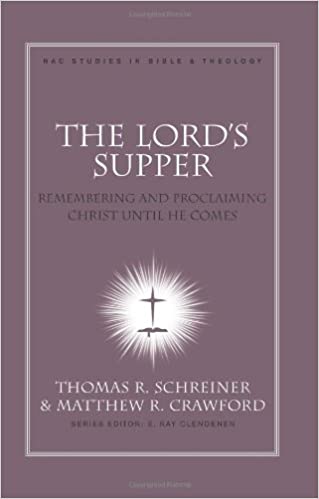A Brief Book Summary from Books At a Glance
By Steve West
Introduction
The Lord’s Supper is the tenth volume in the NAC Studies in Bible & Theology. It brings together a collection of essays by scholars that examine the issue of the Lord’s Supper from a variety of biblical, theological, historical, and pastoral perspectives. It is written from a Southern Baptist perspective but seeks to be useful for a larger audience.
Table of Contents
Introduction
Chapter 1 Was the Last Supper a Passover Meal?
Chapter 2 The Lord’s Last Supper in the Fourfold Witness of the Gospels
Chapter 3 The Lord’s Supper in Paul: An Identity-Forming Proclamation of the Gospel
Chapter 4 “A Glorious Inebriation”: Eucharistic Thought and Piety in the Patristic Era
Chapter 5 Carolingian Conflict: Two Monks on the Mass
Chapter 6 The Theology of Eucharist according to the Catholic Church
Chapter 7 On Faith, Signs, and Fruits: Martin Luther’s Theology of the Lord’s Supper
Chapter 8 The Meaning of the Lord’s Supper in the Theology of Ulrich Zwingli (1484-1531)
Chapter 9 The Reformed View of the Lord’s Supper
Chapter 10 Sounds from Baptist History
Chapter 11 The Lord’s Supper: Celebrating the Past and Future in the Present
Chapter 12 The Lord’s Supper and Works of Love
Chapter 13 The Lord’s Supper in the Context of the Local Church
Epilogue
Summary
Chapter 1: Was the Last Supper a Passover Meal?
Andreas Köstenberger
The Synoptic Gospels clearly depict Jesus’ Last Supper as a Passover meal. Many scholars believe that John presents the Last Supper as taking place the day before Passover. There are issues of inerrancy, historical reliability, and theological interpretation at stake in how we relate the Synoptics and John at this point. A variety of arguments are marshalled in the attempt to prove that the Last Supper was not a Passover meal, but none of them are sustainable. They run on lines of silence, or partial/late data, or overextend their conclusions. Every one of the objections can be answered with a fair interpretation of the texts (as well as the history and theology of both Jewish observance of Passover and the Synoptic Gospel accounts).
There does seem to be some evidence that John places the Last Supper a day earlier than the Synoptics: this has led many to conclude that the accounts are contradictory and that one chronology (or both) is wrong. Others believe that both are accurate, and the alleged contradiction cannot be maintained. Of these scholars, some hold that Jesus celebrated a meal on both nights, whereas other scholars believe it was on the same night. There are a few key passages in John’s Gospel which seem to confirm the latter view, and there is additional data which corroborates it. It is best to conclude that all four Gospels depict Jesus’ Last Supper as taking place on Thursday night before the Friday crucifixion.
The Lord’s Supper was celebrated with more frequency than Passover by the church, because the former was not identical with the latter (even though its inauguration had taken place at the latter). Nothing in Acts or Paul overturns the chronology of the Gospels. There are a dozen subtle clues in the Gospels that support the identification of the Last Supper as taking place at the Passover meal.
Chapter 2: The Lord’s Last Supper in the Fourfold Witness of the Gospels
Jonathan Pennington
Although there is nuance in detail and every Gospel makes unique contributions to the Last Supper, it is profitable to see how much they have in common and to create a unified picture from their material. John has unique emphases, but all of the Gospel writers connect the Last Supper with a Passover meal. John and the Synoptic writers are all inspired, and they are all speaking of the same event. The sequence of cup-bread-cup is unique to Luke, but it can be harmonized with the other accounts, and it provides a special framing of the event.
[To continue reading this summary, please see below....]The remainder of this article is premium content. Become a member to continue reading.
Already have an account? Sign In
